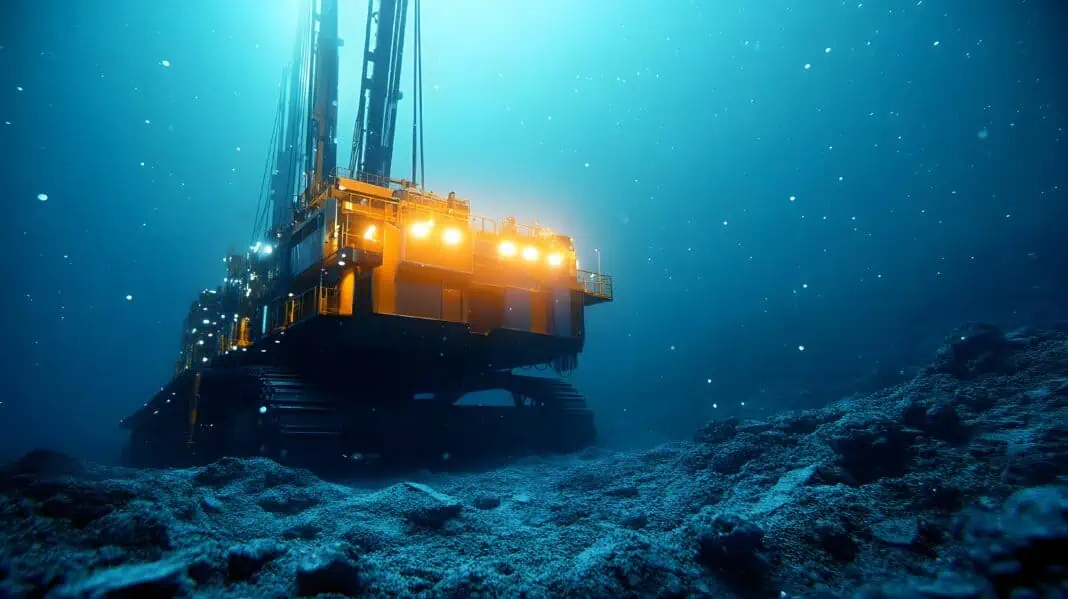Have you ever wondered about who owns the deep seas? I never gave it much thought until I watched ‘Deep Rising’ at a UNOC3 side event. Narrated by Jason Momoa, the film explores the topic of undersea mining and the concept of a ‘common human heritage.’
Deep Rising
Who Owns the High Seas?
The United Nations Convention on the Law of the Sea (UNCLOS), also known as the “Constitution for the Oceans,” is an international treaty that establishes laws to regulate all ocean space, its uses, and resources. The United States has not signed this treaty at the time of writing.
“Common heritage” is a legal term that refers to the principle that all nations have equal access and rights to the high seas (international waters). Minerals found on the deep-sea beds are controlled by the International Seabed Authority (ISA).
What Are Nodules?
Plans are slowly forming to mine ‘nodules’ from the deep ocean. Nodules are small black ‘pebbles’ that contain a lot of minerals needed to create the batteries required for electric vehicles. They grow at a rate of 10 to 100 millimetres per million years and host many known species such as bacteria, sponges, and small worms, in addition to unknown deep-sea species.
The most extensively studied area of polymetallic nodules is the Clarion-Clipperton Zone (CCZ), located between Hawaii and Mexico in the central North Pacific.
The contractors holding 15-year licenses represent nations such as Belgium, China, Japan, Russia, France, the UK, South Korea, Germany, Poland, Jamaica, the Cook Islands, Nauru, and Tonga. All exploration contract holders are undertaking geological and environmental studies as part of their contractual obligations. (Source)
Exploration Phase
Currently in the exploration phase, many countries and companies are eyeing the ocean depths to harvest these mineral-rich ‘pebbles’. Using underwater rovers, the sea bed is being mapped in detail, in the name of science and understanding climate change. But there’s more to it than that. They are also collecting samples.
Exploitation Phase
Companies such as The Metals Company are involved in developing ways to access and exploit nodules, but cannot currently mine on a full-scale basis. They can only do small-scale extraction, which is labelled as study and exploration. Additionally, they can approach potential investors and pitch the concept. This mining technique is being marketed as green and sustainable, a green revolution. But what’s behind the hype?
Many scientists and environmentalists from around the world have called for a ban on deep-sea mining due to its massive impact on this habitat. You can be sure that powerful countries and companies will continue to push for access to the deep until permission is granted.
Here is a video of what a deep-sea mining robot would look like. However, this is just an animation.
This is the real thing: the Pattania II (made by DEME) and Pioneer II (made by China) have already been on the seabed and collected samples for ‘studies’.
Disclaimer: The video below is labeled as being taken in Shanghai and serves only to demonstrate that these robots already exist.
The Problem
In the race against time to find alternatives to replace fossil fuels, companies and governments must create laws that protect the environment. It would be unwise to ignore the lessons from the past 200+ years of human industrial damage to the planet. Whilst there are obvious economic benefits to deep-sea mining for both big and small companies, there are also significant environmental risks that must be given serious consideration.
We can already see the destruction that mining practices have wrought in the Amazon and places such as Quebec province. Deep Rising mentions Obi Island in Indonesia, which has been devastated by nickel mining, as the metal is a crucial component of electric vehicle (EV) batteries.
Elon Musk called for more nickel to be mined in 2020 for Tesla’s NMC (Nickel-Manganese-Cobalt) and NCA (Nickel-Cobalt-Aluminum) batteries. However, Tesla is not the only player in the electric vehicle (EV) battery market. Earlier this year, BYD became a household name. Their batteries are LFP (Lithium Iron Phosphate). Recycling electric vehicle (EV) batteries is currently a complex process.
Aside from the destruction of a habitat we know very little about, the fact that a few people are profiting from our shared human heritage is something we should all be informed about. Environmental NGOs, such as Greenpeace, strive to educate people about what they consider a grave threat to the deep-sea habitat.
How to Watch Deep Rising
If you would like to know more about the film, Deep Rising, check out the trailer and their website. You can currently stream the movie by clicking here.

